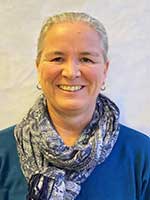Due to copyright issues, an electronic copy of the thesis must be ordered from the faculty. For the faculty to have time to process the order, the order must be received by the faculty at the latest 2 days before the public defence. Orders received later than 2 days before the defence will not be processed. After the public defence, please address any inquiries regarding the thesis to the candidate.
Trial Lecture – time and place
See Trial Lecture.
Adjudication committee
- First opponent: Professor Emerita Anne-Marie Landtblom, University of Uppsala, Sweden
- Second opponent: Associate Professor Morten Engstrøm, NTNU - Norwegian University of Science and Technology
- Third member and chair of the evaluation committee: Professor Shuo-Wang Qiao, University of Oslo
Chair of the Defence
Professor Emeritus Hans Erik Heier, University of Oslo
Principal Supervisor
Researcher Stine Knudsen Heier, University of Oslo
Summary
In Norway, a tenfold increase in narcolepsy type 1 (NT1) was observed after the 2009 influenza A (H1N1) pandemic and Pandemrix-vaccination campaign. It is still discussed whether NT1 with debut after the H1N1-pandemic is the same disease as pre-H1N1 NT1. However, based on a similar immunogenetic predisposition (HLA and some non-HLA genes), most evidence point towards it being the same entity. In this thesis, we aimed to improve the understanding of post-H1N1 NT1 pathogenesis.
The cohort comprised HLA-DQB1*06:02 positive NT1 patients, mostly vaccinated, solely with onset post-H1N1, and their first-degree relatives. Relationship between the genotyped NT1 risk polymorphism rs2305795 in the P2RY11 gene, core narcolepsy symptoms and sleep features, and T cell levels of the gene product receptor P2Y11 (assessed with flow cytometry) were investigated. Flow cytometry was also used to investigate T cell differentiation and levels of two activation markers. Sleep studies and self-report questionnaires were utilized to investigate nighttime muscle activity, and finally we reported on immunomodulation therapy administered in two case reports.
We found a negative correlation between high nocturnal sleep fragmentation, a cardinal symptom of NT1, and low T cell levels of the receptor P2Y11. This suggests that the P2Y11 receptor can have a role in central regulation of sleep stability in NT1 patients. T cell differentiation is not specific for NT1 and cannot be used as disease marker. Muscle activity and RBD in sleep are also significantly increased in post-H1N1 NT1. Decreased sleepiness is observed in one case 18 months after treatment with combined immune modulation therapy administered close to disease onset, which suggests that some NT1 patients can have beneficial effect from immunomodulating treatment.
Overall, the findings point towards shared NT1 pathogenesis in pre-H1N1 and post-H1N1 NT1. We did not find strong evidence for disease continuum in first-degree relatives.
Additional information
Contact the research support staff.
